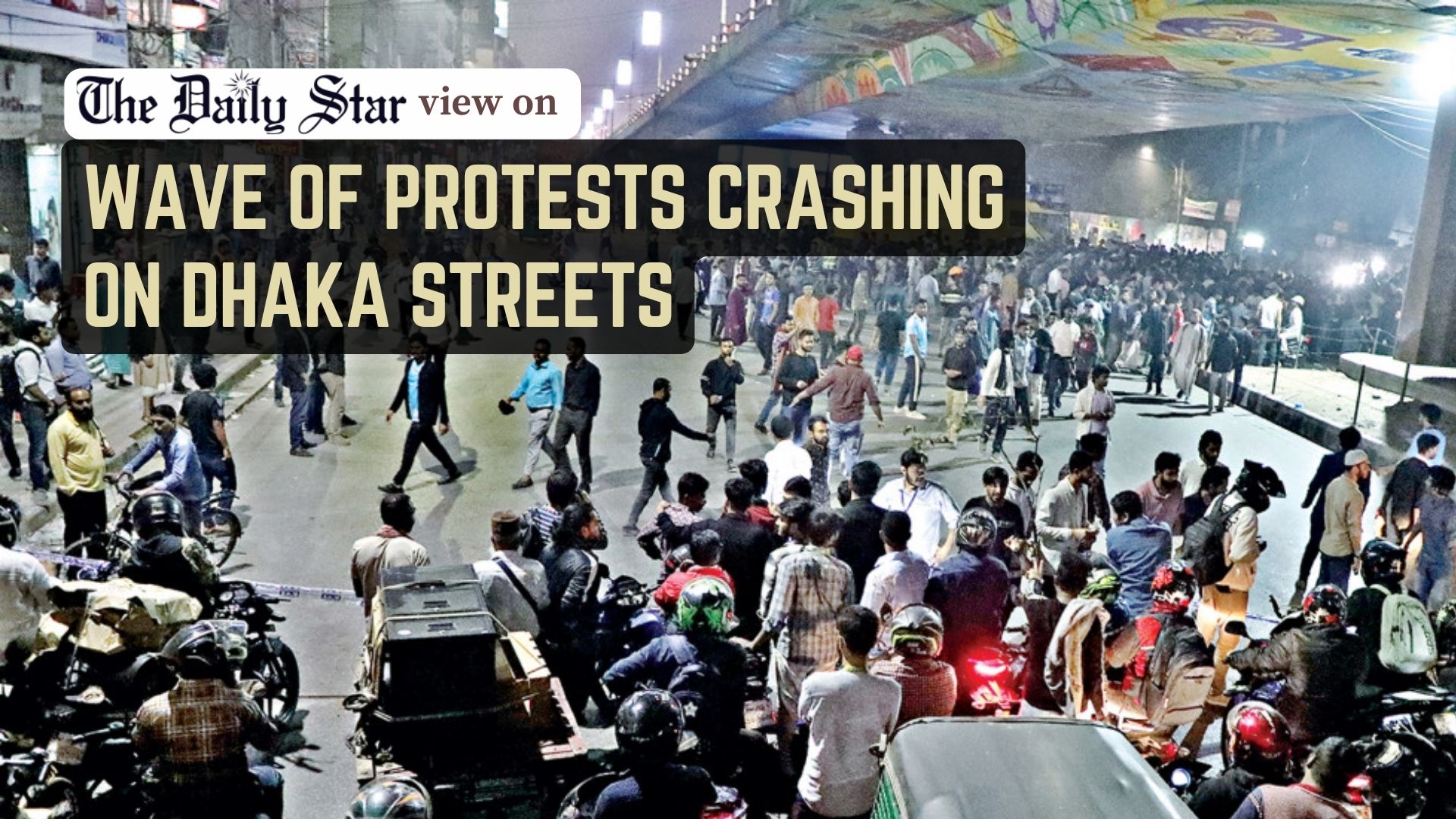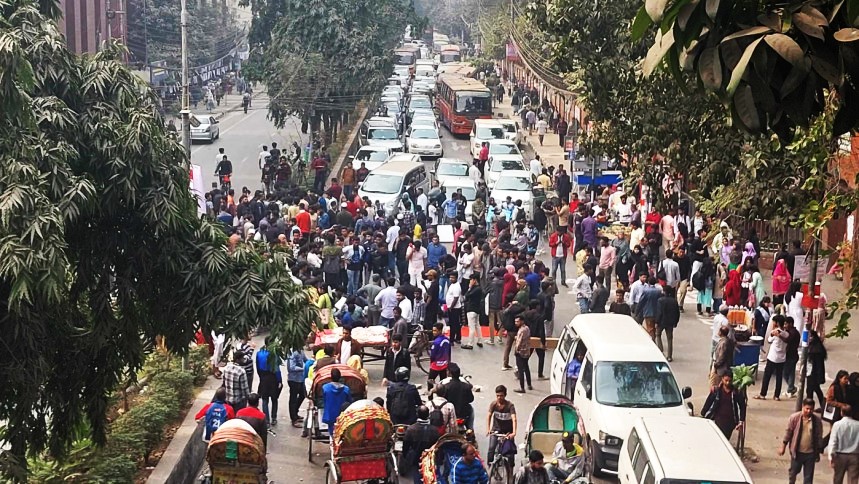Pursuit of justice must not make the public suffer

Shahbagh, one of the most critical intersections in Dhaka, has been a recurring site of protest throughout 2025. Yesterday, Chhatra Dal held a rally there, with activists from around the country participating. The party hired a special 20-coach train from Chattogram to facilitate attendance. Another youth-led political party, NCP, also held their rally on the same day at the Central Shaheed Minar. In anticipation of possible traffic disruptions, the Dhaka Metropolitan Police (DMP) advised the public to avoid the Shahbagh area and recommended that HSC, equivalent, and BCS candidates keep ample time in their hands to reach exam centres.
Whether the causes behind the rallies are just is a separate issue; however, the methods, especially prolonged blockades of a major traffic hub, have had disproportionate consequences for ordinary citizens.
This year, Dhaka has witnessed several days when Shahbagh was effectively shut down. On February 6, protesters blocked the intersection for over nine hours, causing gridlock that extended across major arteries such as Farmgate, Banglamotor, Dhanmondi, and Moghbazar. The blockade lasted into the night and resumed the following day. Similarly, on May 15, another major blockade halted traffic. Yet again, on July 29, protesters returned, intensifying their demands as dialogue with authorities stalled.
The aftermath for the general public has been overwhelming. Commuters walked miles in the sun, students missed exams, and patients' access to major hospitals, such as Bangladesh Medical University (BMU) and Dhaka Medical College Hospital, faced dangerous delays. Ambulances were stuck for hours, and some commuters reported walking up to five kilometres as ride-sharing services suspended operations or hiked prices.
According to the Numbeo Traffic Index 2024, Dhaka is already ranked as one of the most congested cities in the world, and Shahbagh is a critical traffic node. Protest organisers cite a lack of effective response from the government. However, the tactic of full-scale intersection blockades imposes collateral damage on millions who have no direct role in the political crisis.
Bangladesh's constitution guarantees the right to freedom of assembly and expression under Article 39. However, it also guarantees the right to life (Article 32) and freedom of movement (Article 36). None of these rights is absolute, and each must be exercised without infringing on the fundamental freedoms of others. The current form of protest, though constitutionally grounded in its intent, often violates other protected rights by obstructing roads, trapping ambulances, and endangering lives.
From a legal perspective, the balancing of rights is essential. As the Supreme Court of Bangladesh has noted in several public interest cases, the government has a duty not just to protect speech but also to ensure public safety, health, and order. Prolonged occupation of major public roads without alternative arrangements fails this balance. Even in democracies with strong traditions of protest, such as India or the UK, courts have ruled that public inconvenience cannot become a permanent feature of protest.
This does not mean the demands of protesters are invalid or that civil disobedience has no place. On the contrary. Their grievances regarding many civilians being killed in clashes with security forces during the July uprising, deserve legal and moral attention. The July Charter, calling for institutional reforms, compensation, and transparent investigations, addresses real governance gaps. However, tactics that replicate harm to the public in the name of justice may erode public support and entrench polarisation.
So, what's the way forward?
Firstly, the authorities should sincerely consider the protesters' demands and initiate a structured dialogue. Ignoring or delaying responses only fuels more disruptive actions. Secondly, protest zones should be designated for large-scale gatherings, which can accommodate crowds and media coverage without bringing the capital to a halt. Thirdly, authorities should coordinate with protest leaders to set time limits or create "protest windows" during off-peak hours. South Korea and Germany have implemented such models with significant success. In situations where roads are to be occupied, even temporarily, emergency corridors must remain open. No protest should compromise access to hospitals or fire services.
Finally, the public must also reflect critically on protest culture. It is easy to support a cause in principle, but when tactics repeatedly endanger lives or livelihoods, they require scrutiny. Citizens should be able to stand for justice without causing others to be trapped in traffic for six hours on a weekday, miss critical medical appointments, or fear for their elderly parents stuck in public buses.
Regardless of who is responsible for resolving the political dispute, it is unacceptable to impose prolonged hardship on ordinary citizens. Protest must not be equated with punishment for the uninvolved. The city and its people deserve better.
Samia Jaman Karobi is lecturer of Department of Law at R. P. Shaha University.
Views expressed in this article are the author's own.
Follow The Daily Star Opinion on Facebook for the latest opinions, commentaries and analyses by experts and professionals. To contribute your article or letter to The Daily Star Opinion, see our guidelines for submission.




 For all latest news, follow The Daily Star's Google News channel.
For all latest news, follow The Daily Star's Google News channel. 

Comments